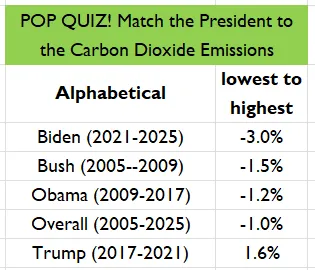Moving The Goalposts, IPCC Secretly Redefines ‘Climate’
http://www.thegwpf.com/moving-goalposts-ipcc-secretly-redefines-climate/
The IPCC appears to have secretly changed the definition of what constitutes ‘climate’ by mixing existing and non-existing data
The definition of ‘climate’ adopted by the World Meteorological Organisation is the average of a particular weather parameter over 30 years. It was introduced at the 1934 Wiesbaden conference of the International Meteorological Organisation (WMO’s precursor) because data sets were only held to be reliable after 1900, so 1901 – 1930 was used as an initial basis for assessing climate. It has a certain arbitrariness, it could have been 25 years.
For its recent 1.5°C report the IPCC has changed the definition of climate to what has been loosely called “the climate we are in.” It still uses 30 years for its estimate of global warming and hence climate – but now it is the 30 years centred on the present.
There are some obvious problems with this hidden change of goalposts. We have observational temperature data for the past 15 years but, of course, none for the next 15 years. However, never let it be said that the absence of data is a problem for inventive climate scientists.
Global warming is now defined by the IPCC as a speculative 30-year global average temperature that is based on one hand on the observed global temperature data from the past 15 years and on the other hand on assumed global temperatures for the next 15 years. This proposition was put before the recent IPCC meeting at Incheon, in the Republic of Korea and agreed as a reasonable thing to do to better communicate climate trends. Astonishingly, this new IPCC definition mixes real and empirical data with non-exiting and speculative data and simply assumes that a short-term 15-year trend won’t change for another 15 years in the future.
However, this new definition of climate and global warming is not only philosophically unsound, it is also open to speculation and manipulation. It is one thing to speculate what the future climate might be; but for the IPCC to define climate based on data that doesn’t yet exist and is based on expectations of what might happen in the future is fraught with danger.
This strategy places a double emphasis on the temperature of the past 15 years which was not an extrapolation of the previous 15 years, and was not predicted to happen as it did. Since around the year 2000, nature has taught us a lesson the IPCC has still not learned.
With this new definition of climate all data prior to 15 years ago is irrelevant as they are part of the previous climate. Let’s look at the past 15 years using Hadcrut4. The first figure shows 2003-2017.
It’s a well-known graph that shows no warming trend – except when you add the El Nino at the end, which of course is a weather event and not climate. The effect of the El Nino on the trend is significant. With it the trend for the past 15 years is about 0.15° C per decade, close to the 0.2 per decade usually quoted as the recent decadal trend. Before the El Nino event, however, the warming trend is a negligible 0.02° C per decade and statistically insignificant.
The second graph shows the 15 years before the recent El Nino, i.e. 2000-2014. The trend over this period is influenced by the start point which is a deep La Nina year. Without it the trend is 0.03 °C per decade – statistically insignificant. Note that there are minor El Ninos and La Ninas during this period but they tend to have a small net effect.
So which does one choose? The El Nino version that leads to 0.6° C warming over the 30 years centred on the present, or the non-El Nino version that suggests no significant warming? The latter of course, because the trend should be as free from contamination of short-term weather evens — in the same way as they are free from decreases caused by aerosols from volcanoes blocking out the sun and causing global cooling for a while.
The same problem can be seen in the IPCC’s 1.5C report when it analyses the decade 2006-2015 which it does extensively. In this specific decade 2015 is significantly warmer than the other years, by about 0.2°C. NOAA said, “The global temperatures in 2015 were strongly influenced by strong El Nino conditions that developed during the year.” The temperature trend including the El Nino year of 2015 is 0.2°C, that future again. Without the El Nino the trend is statistically insignificant.
To see the future temperature and climate the IPCC envisage in their report consider their Summary for Policy Makers figure 1, (click on image to enlarge.)
The IPCC’s attempt to move the goalposts is highly questionable. Non-existing data extrapolated for assumed temperature trends over the next 15 years should not be part of a formal definition of what constitutes climate.





